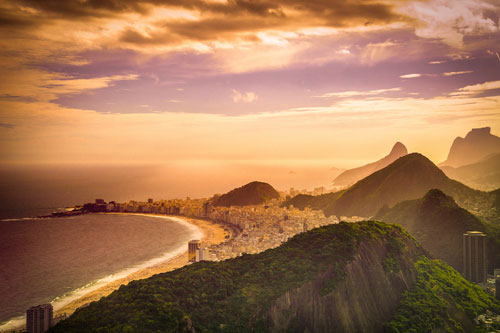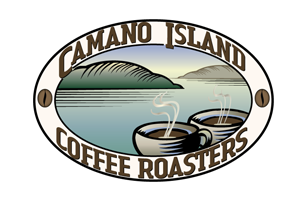
Brazilian Coffee: World Renowned and Distinctive
It is impossible to discuss coffee without bringing up Brazil. The South American country is just as well-known globally for coffee production as it is for the beautiful beaches along its coast. Coffee’s rich history in Brazil has even become legend. Back in 1727, Lt. Col. Francisco de Mello Palheta, who was sent by the Portuguese Government to French Guiana under the ruse of settling a border dispute, smuggled coffee plants out and brought them back to his home in Brazil. By 1800, coffee had spread throughout the country. For more than a century, Brazil has been the world’s largest coffee producer and is responsible for a third of all coffee production.
Most of the coffee beans in Brazil are processed using the dry (natural) method, due to the country’s favorable climate of a long dry season; although, the wet-process and pulp-natural methods are also used. During the dry process, the coffee cherries are picked — either mechanically or manually — and placed in the sun for a very long time to dry. The cherries will eventually turn dark brown, and the pods will harden. Then, the green bean is removed. According to Coffeeresearch.org, this is a delicate process and leaves some room for error, like fermentation, but Brazil has in essence perfected it.
Flavors of Brazilian Coffee
Processing plays a huge role in flavor, and dry-processing gives the coffee a very distinctive taste that for which Brazilian coffee is known. Across the country, coffee is usually heavy, fruity and complex, with a bit of spice. This is because the bean dries while still connected to the fruit. Some regions do produce medium-bodied coffees, too.
Coffee-Growing Regions of the Country
Brazil produces both Arabica and Robusta beans, but mostly Arabica. Coffee is grown across many distinct regions in these seven states: Minas Gerais, Espírito Santo, Bahia, Rio De Janeiro, São Paulo, Parana and Rondonia. Although, according to Coffeereview.com, there are three main regions that produce Brazil’s best coffee: Mogiana, Sul Minas, and Cerrado de Minas.
Mogiana, an area near São Paulo and Minas Gerais, has mountains and rolling hills. It has a lot of small and medium-sized farms, and coffee from here will suit those that like sweet, heavy body-tasting flavors. The Sul Minas region, which is in Minas Gerais, produces the most coffee in all of Brazil. It’s also very mountainous and has a mild climate, which makes it great for farming. Coffee from Sul Minas is medium-bodied and sweet. Cerrado, which is also in Minas Gerais, has a tropical climate — hot, rainy summers and dry winters — and plateaus make up the terrain. The coffee from this region is heavy-bodied and sweet, and the region tends to yield high-quality coffee that enthusiasts praise. Almost half of the production in the country occurs in Minas Gerais. Coffee lovers would surely enjoy visiting this place.
A Brazilian Coffee Profile To Suit All Tastes
Camano Island Coffee Roasters sells Brazilian coffee in medium and dark roasts. Medium roast is very sweet and has some undertones of chocolate or caramel. The dark roast will have a smokier taste. All of our beans are low in acid, which prevents heartburn and acid reflux. No matter which roast you choose, though, you can expect a top-quality coffee flavor that you will love. Join our Coffee Lover’s Club and never run out of your favorite.
An Ethical and Environmentally-Friendly Treat
Here at Camano Island Coffee Roasters we put so much good into our coffee. Our shade-grown organic coffee is free of pesticides and the result of fair trade, so you can enjoy it knowing that you’re not just getting the healthy benefits that coffee provides, but you’re also supporting the people and places behind it.


